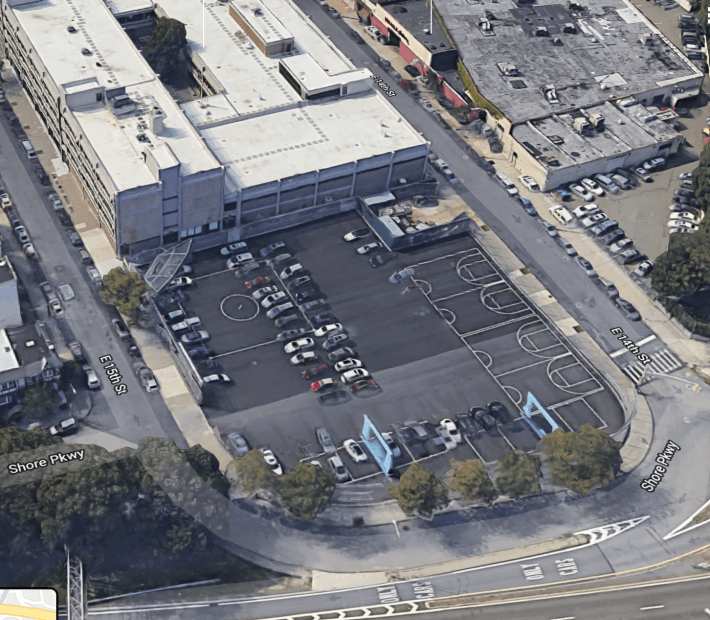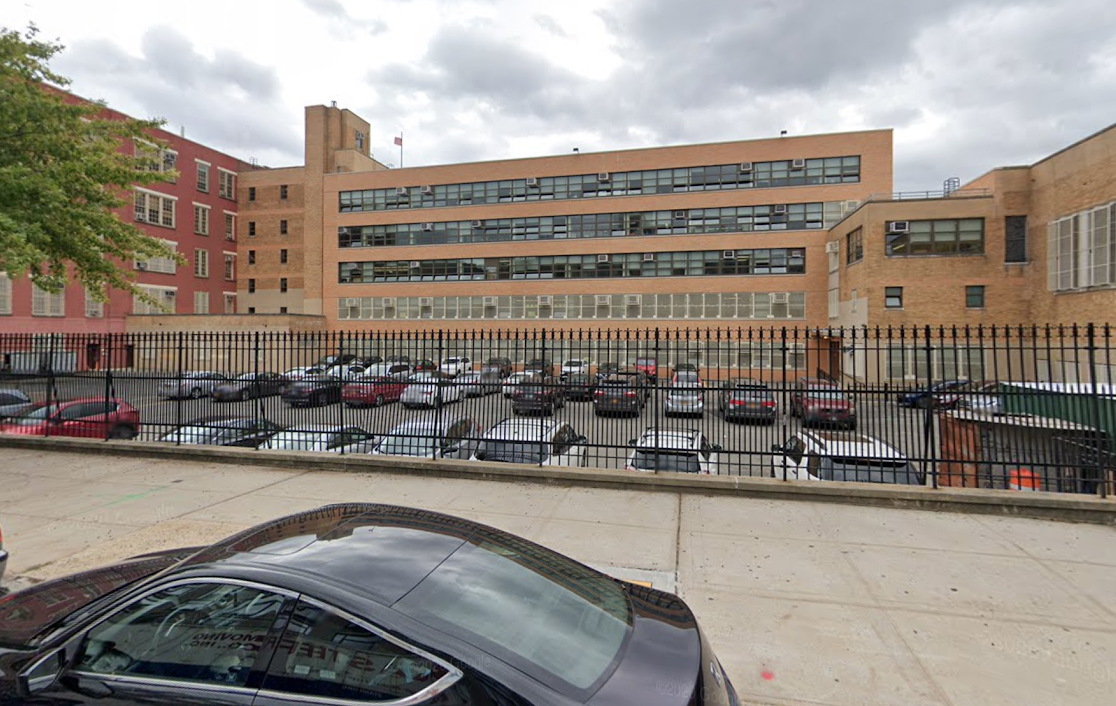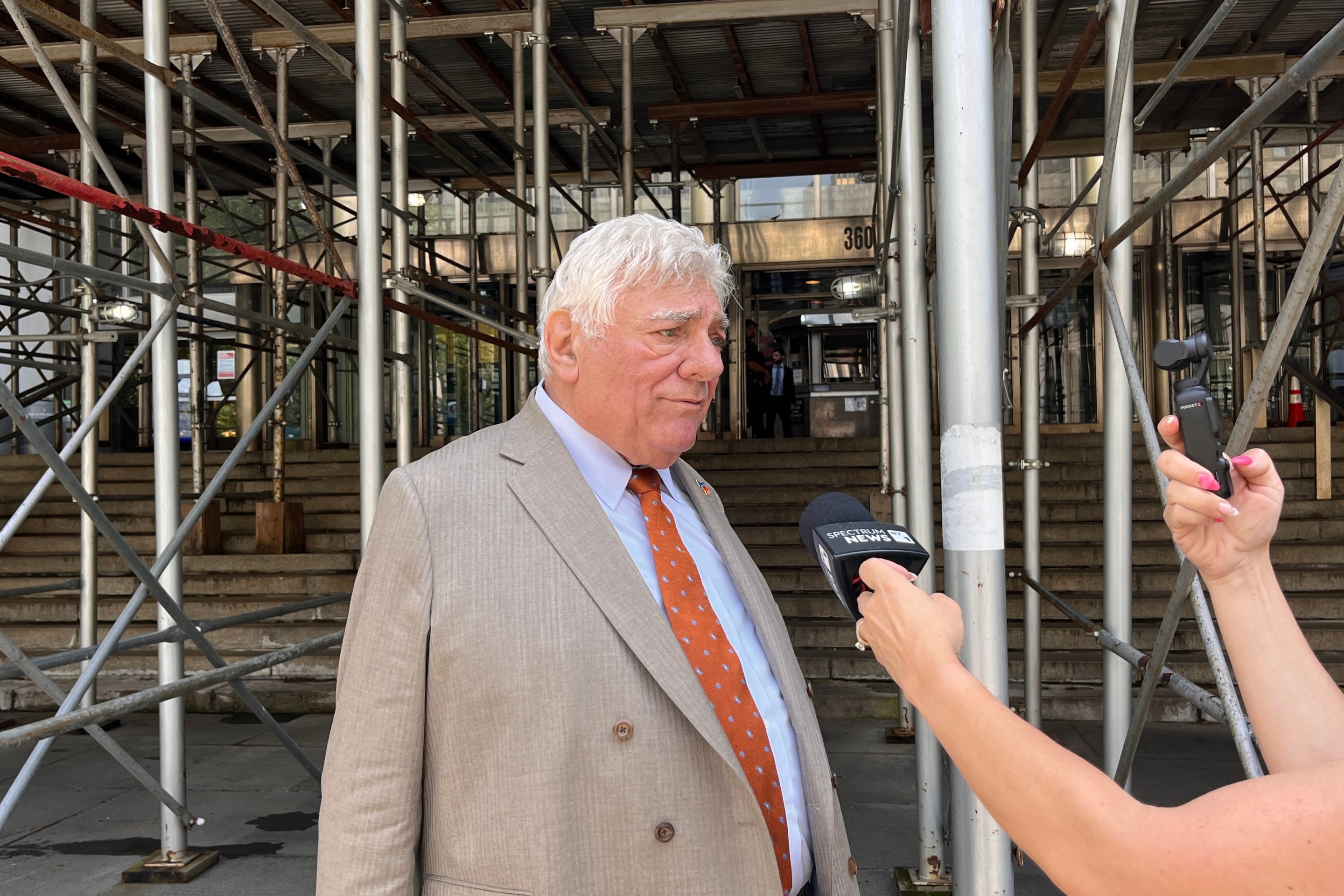Here's another reason why New York City will have trouble providing outdoor space for school kids during the COVID-19 crisis: too many cars are parked in the outdoor space!
An investigation conducted by environmental education nonprofit NYC H2O revealed that roughly one in 12 city primary schools allow staff members to park their cars on school playgrounds. As a result, many schools will have little space for holding outdoor classes and activities to prevent the spread of COVID-19.
NYC H2O initially visited 110 public elementary and middle school buildings throughout Brooklyn and Queens in Spring 2018, and found that nine of them (8 percent) had cars parked in their schoolyards during school hours. Through Google Street View, NYC H2O has also identified several high schools that have fully converted their schoolyards into parking lots, leaving almost no room for outdoor activities at all.

If you project those findings over the entire city public school system — which contains roughly 1,200 buildings — about 100 public school buildings have turned recreation spaces into parking spaces.
It has become clear that the spread of COVID-19 can be greatly reduced by shifting social activities outdoors, while minimizing time spent in enclosed indoor spaces such as classrooms. But if the city takes no action to prohibit parking in schoolyards, there will be much less room for many schools to bring their students outdoors.
As Mayor de Blasio moves towards in-person learning two or three days per week, he can't ignore all the parked cars — because science tells us that the more time New York City public school students can spend outdoors during the school day, the lower the chances are of coronavirus transmission. (There have already been major outbreaks traced back to indoor classrooms in school districts around the world, from Georgia to Jerusalem and back again.)
In addition to his failure to keep cars out of children's recreation space, Mayor de Blasio has not moved decisively to bar cars from streets surrounding school buildings to create more space for outdoor classes, another deferral to the needs of car drivers over those of students.
Even before the COVID-19 pandemic, this would be a problem because students need space to play and exercise during recess. Outdoor play contributes to healthy child development in numerous ways, providing benefits ranging from exercise to socialization to the development of executive functioning skills. A good diet and regular exercise, also known as Active Living, promote a healthy metabolism by lowering the risk of obesity and Type II diabetes in children and adults. Students will be at a greater risk of developing these metabolic conditions, which increase the risk of severe COVID-19 among children, when their ability to exercise during recess is limited by cars parked in schoolyards.
This means that opening up our schoolyards will also help protect children from the virus in the event of an outbreak.
Some people may argue that it’s necessary for schools to provide reliable parking spots to teachers if they cannot access public transport or wish to avoid it because of the pandemic. But it was the de Blasio administration itself that decided — in 2017 — to give all public school teachers a placard for free parking from the city. This functionally allows teachers to park wherever they choose, as cars with parking placards are rarely ticketed for illegal parking. There is no justification for allowing teachers to park in schoolyards if they are already provided with such strong parking privileges.
“Do some teachers drive to school because they have to? Sure. Do all teachers who drive to school need to? Not a chance," said Eric McClure, executive director of the livable streets political action committee StreetsPAC. "Cars parked in schoolyards are a symptom of how we’ve surrendered our city to automobiles, and there’s no better time to start reclaiming it than when the very lives of the city’s schoolchildren depend on having as much outdoor space as possible for both learning and recreation."
Multiple city council members, the City Comptroller, and the Office of the NYC Public Advocate all declined to comment for this article, potentially to avoid antagonizing the teachers’ union (even though lowering the risk of COVID-19 outbreaks in schools is in the best interest of all teachers, as well as students).






